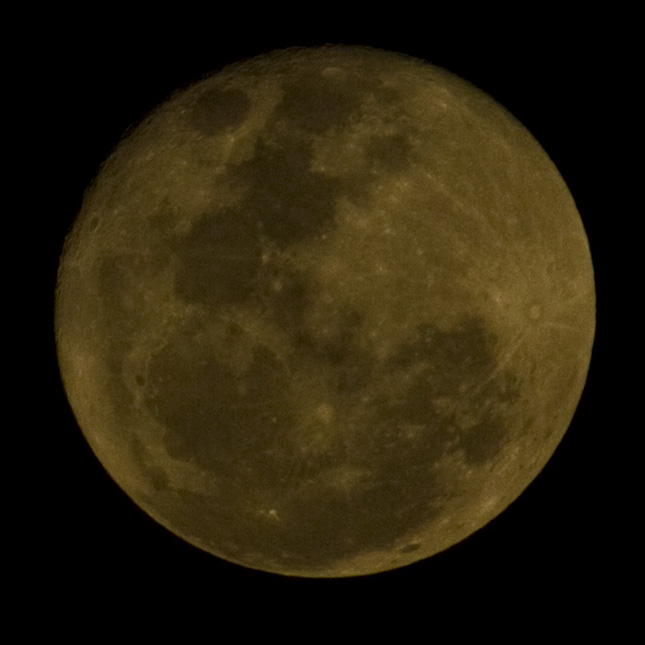We all expected to take great shots of the super-moon and if your image results were not as good as the moon you could see there is a good reason to it. Here are the three key tips to getting the moon
 This third shot is the result of reducing the aperture to just allow very little light. The details on the bright areas appear after reducing the exposure levels in post process.
This third shot is the result of reducing the aperture to just allow very little light. The details on the bright areas appear after reducing the exposure levels in post process.

1. The contrast ratios - White Dot against Pitch Black - the light meter is not very useful here. The first shot is what you could expect to get if you click with your point and shoot camera in auto. The second shot has a much reduced exposure and has been further adjusted in post-process. The Highlights are blown out though some of the features of the moon start becoming visible.
 This third shot is the result of reducing the aperture to just allow very little light. The details on the bright areas appear after reducing the exposure levels in post process.
This third shot is the result of reducing the aperture to just allow very little light. The details on the bright areas appear after reducing the exposure levels in post process. 2. Tack Sharp - Getting a sharply focussed shot is challenging because of both blurs (motion and camera). To get the right exposure one has to go beyond using a basic tripod. Which Tripod does on use - Basic is enough though, but one needs to take care of elements which can shake the camera. Remote trigger the camera of in timed trigger as the hands can shake it. Secondly the mirror flapping up also results in camera vibration and the custom setting to lock the mirror up is useful. Watch for wind which may vibrate the basic tripod - yes a basic tripod is enough. Don't forget that the moon is a moving object itself and long exposures above a second will show as motion blur.

3. Distance - Even at the perigee (closest distance) the moon is 359,000 km away and one needs a long telephoto lens to get features of the moon.
Though they may look similar because they have been cropped to show the moon fully. The size of images are 38kb, 102kb and 385kb. The image resolution varies as I ended up just taking 2-10% of the total image captured with my 55-250 telephoto zoom lens. A 800mm lens would do justice to taking the moon fully on the camera sensor perhaps with a 2x teleconvertor.
Here is a Bonus Last Tip - Shoot the moon when it is just rising on the horizon - it can create some dramatic silhouttes and the moon has an interesting hue at times. Enjoy the shots of the yellow as it rose from the horizon.










No comments:
Post a Comment